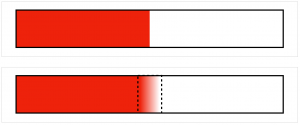Talk topic: Beyond the usual data collection suspects
For research involving human participants, it’s tempting to draw on the usual suspects of interviews, questionnaires, and focus groups, because these are familiar and widely used. However, these methods are only well suited to a limited range of contexts; they’re of little or no use when dealing with knowledge that people find difficult or impossible to put into words.
This talk describes various types of knowledge, and methods suitable for handling each type. These methods include card sorts, laddering, direct observation, indirect observation, and projective approaches. All these methods are swift and simple to use, and give rich insights.

A card sort in progress: How does this participant categorise buildings?
Talk topic: Ways of representing categorisation and reasoning
Research draws heavily on text and on a limited number of representations such as tables, which can bias the researcher towards various ways of thinking about a problem. Drawing on a wider range of formats improves the likelihood of gaining significant insights into the key issues. For instance, fitting data into tables of categories implies that you’re dealing with crisp sets as shown in the first of the two diagrams below, where something fits neatly into one category or the other, with nothing in between. However, using a crisp/fuzzy/crisp representation like the second diagram below might be a more accurate representation of the data, with many cases definitely falling into one category, many definitely falling into another, but a significant number falling on a sliding scale somewhere between the definitely red and the definitely white.

This talks describes the issues involved, and representations suitable for handling those issues.